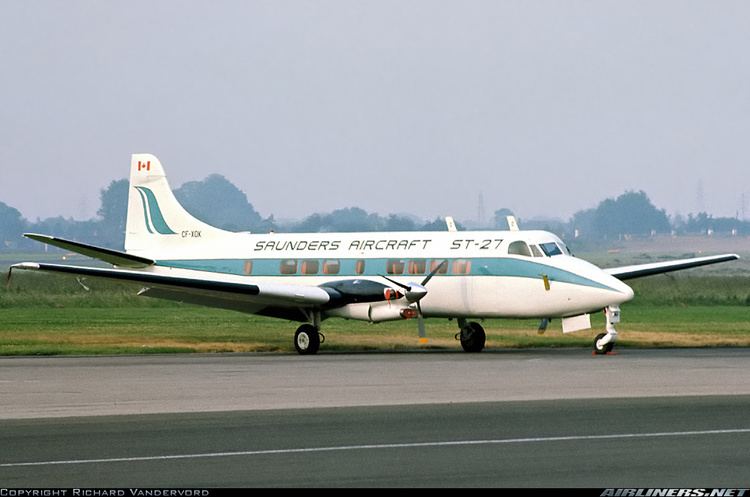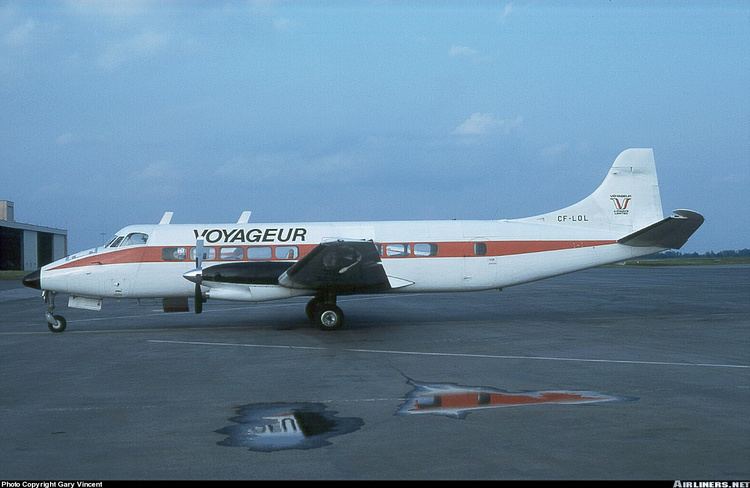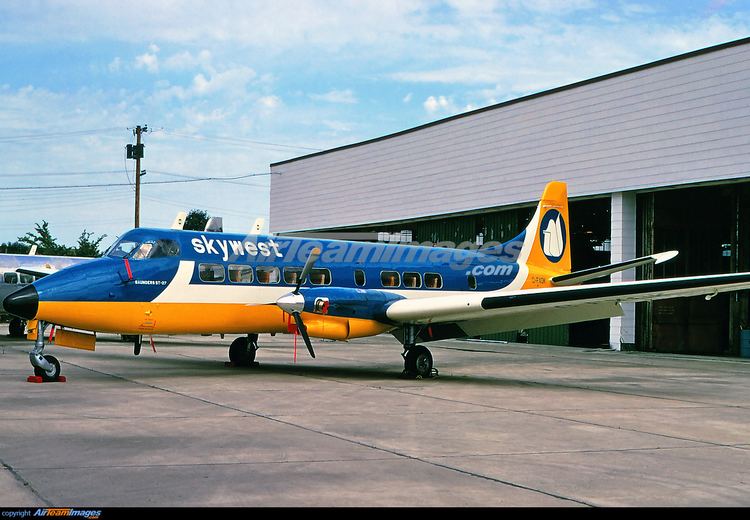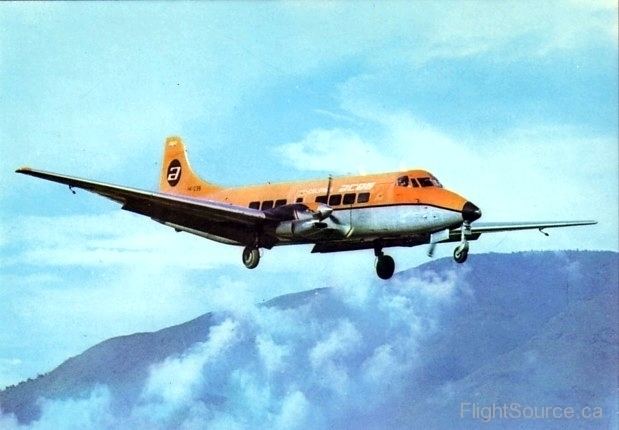Wingspan 22 m Retired 1980 | Length 18 m First flight May 28, 1969 | |
 | ||
The Saunders ST-27 was a regional aircraft built in the 1970s by the Canadian Saunders Aircraft Company based at Gimli, Manitoba. The aircraft was designed as a conversion of the earlier de Havilland Heron. The conversion program was extensive and featured two Pratt & Whitney Canada PT6 turboprops and a stretched fuselage. Despite its promise as a regional airliner, the project collapsed when Manitoba government funding was withdrawn in 1976.
Contents
- Design and development
- Operational history
- Saunders ST 28
- Aftermath
- Operators
- Specifications for Saunders ST 27
- References

Design and development

Using 13 surplus de Havilland Herons airframes, Saunders designed the conversion and utilized some engineering input from Aviation Traders (Engineering). The remanufactured design was based on a stretched fuselage to accommodate 23 passengers, a lengthened nose to fit radar, reshaped vertical tail (also increased in size) and two Pratt and Whitney PT6A turboprops replacing the original four Gipsy Queen piston engines, along with other minor changes. All of the aircraft's systems, including the brakes, were pneumatic with the exception of the windshield wipers, which were hydraulic.
Operational history

Originally based in Montreal, Quebec, the Saunders operation moved to Gimli, Manitoba in 1971 after substantial start-up funding was obtained from the Manitoba provincial government. The government eventually invested $52 million (Canadian) until 1976 when the funding was cancelled. Only 12 ST-27s were built. Although the improved performance of the turboprops was appreciated by prospective customers, the lack of a US certification limited potential sales. Two Saunders ST-27s were dry-leased to "Sky-West" in order to provide scheduled air service to Yorkton, Dauphin and Brandon (from Saskatoon and Winnipeg) as an economic development project. Other ST-27s served as regional airliners in Ontario and elsewhere but few air carriers were exploiting this route system at the time. The notable exception was Air Otonabee (from 1980: Air Atonabee) operating scheduled passenger service from the Island Airport (Toronto), using ST-27 aircraft beginning in 1974; by 1984, it was carrying 25,000 passengers annually.
Saunders ST-28

With only meager sales success due to the certification issue and with old Herons becoming more expensive, the company decided to manufacture a new version based on the original ST-27, compliant with US Federal Aviation Regulation Part 23 (FAR 23). The first ST-28 was manufactured at the Gimli, Manitoba factory using new jigs and tooling supplied by Hawker Siddeley Aviation. Although superficially similar to the earlier ST-27, the new aircraft benefited from the experiences flying the earlier airliner in regular service. Larger cabin windows, an increased rudder size, four-bladed propellers and a host of other enhancements were incorporated in the ST-28, including a 1,000 lb (450 kg) increase in maximum takeoff weight (MTOW) and extra fuel capacity. The first flight of the prototype, C-FYBM-X took place on July 18, 1974.

While testing was taking place towards an American certification, the Saunders company had plans for series production but no firm orders and a tremendous drain on available funding. The precarious financial situation eventually led to a review by the Manitoba government and the withdrawal of funding in 1976. The company was forced to wind down operations and sold all assets and rights to Air Otonabee, one of the primary operators of the earlier ST-27. By the early 1980s, the sturdy airliners began to fade from service with the last ST-27 being retired during this period.
Aftermath
C-GCML (cn 009) was converted from DH Heron c/no. 14095 in 1974 and is now on display at the Canadian Bushplane Heritage Centre, Sault Ste Marie, Ontario, Canada. The ST-28 prototype owned by the Western Canada Aviation Museum and originally stored at the Gimli Airport, was cut up for scrap in 2014.
Operators
Specifications for Saunders ST-27
Data from Jane's All The World's Aircraft 1971–72
General characteristics
Performance
